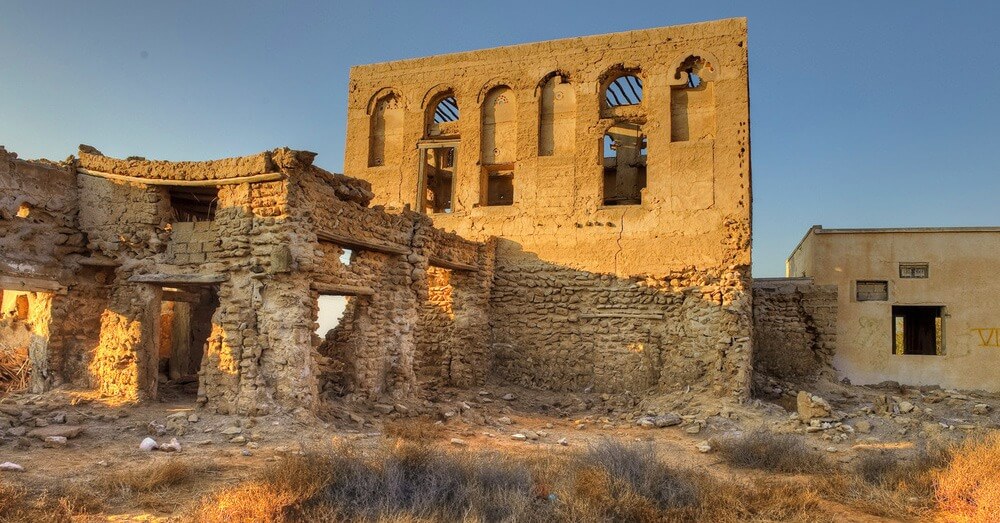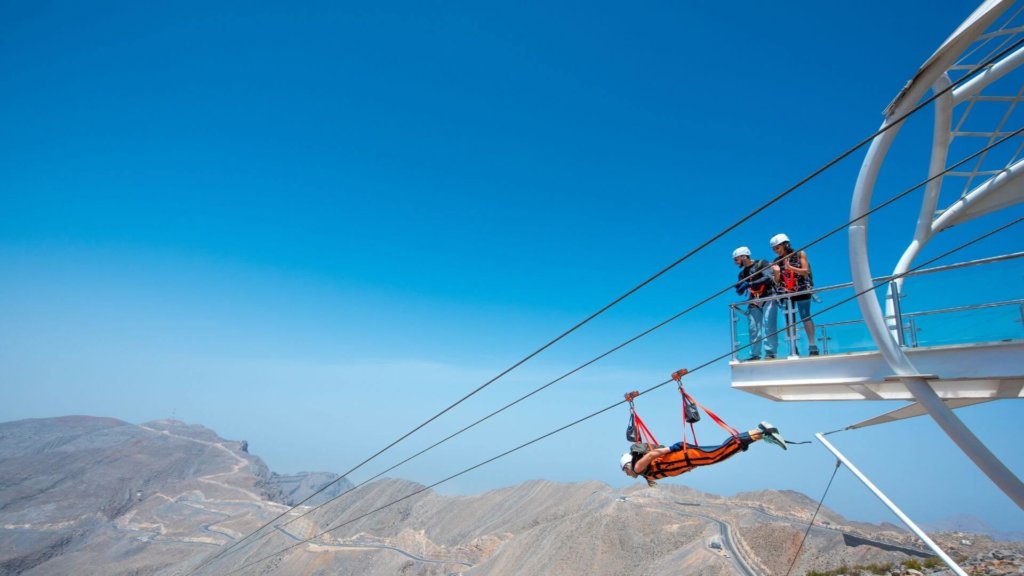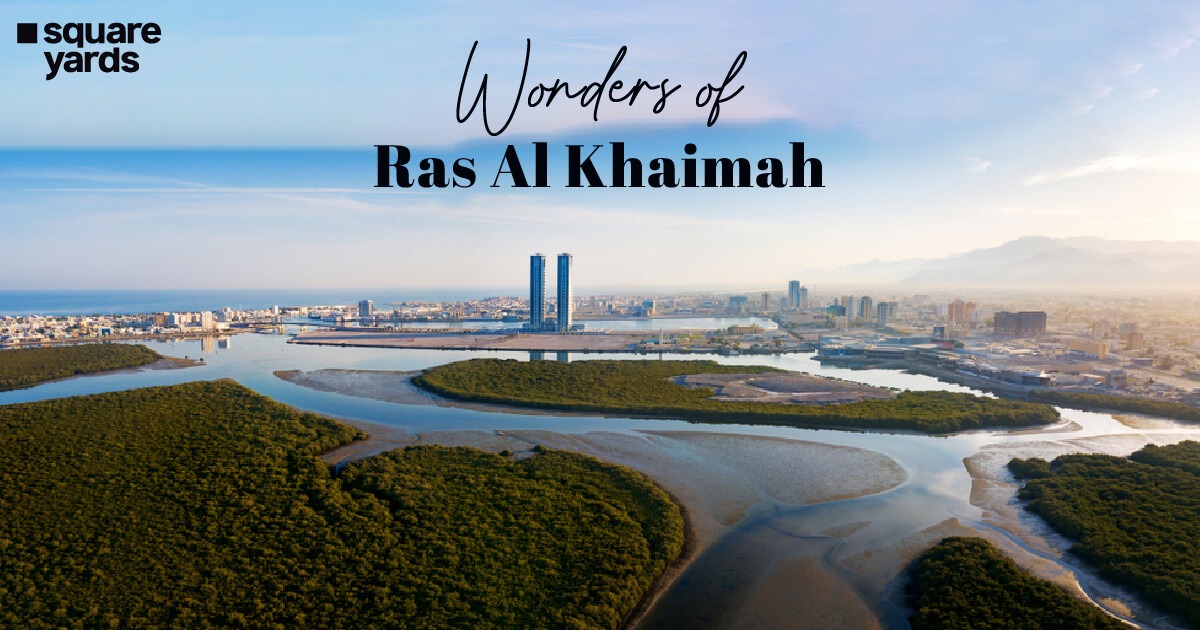One of the least explored emirates and cities in the United Arab Emirates is Ras Al Khaimah. It is one of the seven emirates of the United Arab Emirates. The emirate is famous for sandy beaches, desert dunes, islands and other historic locations. Every year, Ras Al Khaimah invites many tourists to bask in the glory of this ancient city. This article takes you through several interesting facts about visit Ras Al Khaimah.
About Ras Al Khaimah
Ras Al Khaimah is the northernmost emirate of the United Arab Emirates. Its history dates back to the 3rd millennium BC. Ras Al Khaimah, earlier known as Julfar, was one of the first pearl diving trade centres. The climate of Ras Al Khaimah is mostly hot and arid, with summers very hot and winters mild. The average temperature in January is 12 degrees Celsius, and the average in July is 43 degrees Celsius. Rain in the area is sparse. However, there are a few rainy days in winter.
Emiratis and expatriates comprise the 345,000 population of Ras Al Khaimah, which is concentrated in the capital of RAK city. Ras Al Khaimah is experiencing a high growth rate in the infrastructure, tourism, and manufacturing sectors. The city is also becoming a popular destination for explorers and international investors. The main source of income for the city is oil and gas. Tourism has recently increased in the area due to the presence of multiple landscapes like beaches, deserts and the mangrove forest. The emirate has been diversifying its economy and now focuses on tourism, manufacturing, and financial services.
Interesting Ras Al Khaimah Facts

Ras Al Khaimah is a gem situated in the United Arab Emirates. There is a bouquet of landscapes, parks and historic sites that you should visit. Here are some interesting Ras Al Khaimah facts to be aware of.
-
The Bronze Age in Ras Al Khaimah’s History
During the Bronze Age, Ras Al Khaimah’s history unveiled a fascinating era of culture and took a sophisticated turn. The Bronze Age in Ras Al Khaimah is divided into the Halfit Period, Umm an-Nar, Wadi Suq and the Late Bronze Age. This bronze period was marked by the use of bronze for tools and artefacts that flourished in the region from around 3000 to 1300 BCE. Archaeological evidence indicates that visit Ras Al Khaimah was a vital hub for trade, connecting it with the most active civilisations of Mesopotamia and the Indus Valley, along with some of the neighbouring regions. Discoveries like Shimal, an archaeological site bearing witness to the old tombs in the northeast of Ras Al Khaimah City.
-
Date Farms Heaven in Ras Al Khaimah
The date farms of Ras Al Khaimah stand as a testament to the emirate’s rich agricultural heritage. Nestled between the arid landscapes, these farms showcase the ingenuity of local farmers who have harnessed the region’s unique climate to cultivate date palms, producing one of the Gulf’s most cherished fruits. The date palm groves provide a sustainable income source and serve as a cultural symbol deeply rooted in the community. Visitors are treated to a true experience, where they can witness traditional date harvesting methods, learn about the intricate care required for these palms, and savour the sweet, nutrient-rich dates that have sustained generations. These farms contribute to the local economy and offer a glimpse into the historical ties between people and the land, making them an integral part of Ras Al Khaimah’s cultural and agricultural legacy.
-
Pearl Farms of Ras Al Khaimah
The first pearl farm in the UAE is located in Ras Al Khaimah. This farm holds together the history of pearl farming in the region and the trade relations established through it. Suwaidi Cultured Pearl Farm has opened its gates for visitors to experience the true pearl diving experience. The guests are made to wear wet suits and are allowed to collect their oysters. They are also educated about the pearl trade history of the Gulf.
-
The Ghost Town of Ras Al Khaimah
In the United Arab Emirates, there is an abandoned settlement called Jazairat Al Hamra, often known as the Ghost Town of Ras Al Khaimah. Originally an active neighbourhood of pearl divers and fishermen, it was constructed in the 14th century by three indigenous tribes. The community was abandoned in the 1960s due to several circumstances, including the collapse of the pearl diving industry, the discovery of oil in the area, and a conflict between the people and the king of Ras Al Khaimah. Today, the ruins of Jazairat Al Hamra are a famous hangout spot for tourists. You can walk around the city, explore the town and click a picture or two.
-
Free-Roaming Animals of Ras Al Khaimah
If you are out on a desert safari, an encounter with a wildling is usual. If you know the right people, you will encounter camels, domesticated falcons and maybe a pet lion. If you adore animals, plan a desert camping with your family or friends.
-
Al Wahabiyya- Ras Al Khaimah’s Oldest Tradition

Al Wahbiyya is a traditional folk dance from the United Arab Emirates’ emirate of Ras Al Khaimah. It is still performed at weddings, festivals, and other special events. It is one of the country’s oldest forms of art. The performance has three stages where there is poetry, dance and music. Men queue up in two rows and execute the Al Wahbiyya dance. The dancers alternated back and forth in sync with the sound of the flutes and drums. They frequently dance while brandishing swords or firearms in the air. A lone vocalist recites poetry to accompany the dance. The Al Wahbiyya dance honours manhood, bravery, and strength. Al Wahbiyya dancing is derived from the warrior culture and Bedouin heritage.
-
Ras Al Khaimah Beaches Are Downright Gorgeous
Ras Al Khaimah is the bearer of some of the UAE’s most beautiful beaches. The emirate has a coastline of approximately 64km. Al Hamra Beach is simply breathtaking. It is the perfect place for a relaxing weekend getaway with your loved ones. Al Marjan Island is another place you shouldn’t miss in Ras Al Khaimah. The artificial archipelago makes up for a great beach. Choose from many water sports to taste the salt water and Al Marjan Island.
-
The World’s Longest Zip Line Is Located in Ras Al Khaimah

If surfing among the winds is on your list, why not do it with the world’s longest zipline? Jebel Jais Flight is the world’s longest and fastest zipline. The trail is 1.76 miles long and can go up to 93 miles an hour. Jais Flight promises you the best and the most adventurous 3 minutes of your life. The
Why You Should Visit Ras Al Khaimah
Ras Al Khaimah has several options for fun experiences for friends and family. Some of the options are mentioned below.
-
- Jebel Jais: Jebel Jais is one of the highest peaks in the UAE. You can also indulge in activities like hiking and biking on Jebel Jais.
- Stunning Beaches: Enjoy the pristine beaches along the Persian Gulf for a perfect sunbathing, swimming, and water sports day.
- Cultural Heritage: Explore historic sites, including Dhayah Fort, Shimal and the National Museum, to learn more about the history of RAK.
- Natural Wonders: Discover the rugged beauty of the Hajar Mountains, Jebel Jais and Al Marjan Island to marvel at gorgeous landscapes.
- Traditional Souks: Visiting Ras Al Khaimah and missing on souks is unfair! Indulge yourself in the traditional souks of RAK, where you can shop for spices, textiles, and handicrafts.
- Pearl Farming: Trace the history and art of pearl cultivation to learn how pearl farms have contributed to Gulf history.
- Culinary Delights: Savor Emirati and international cuisines from the restaurants in town, from casual eateries to fine dining.
- Adventure Sports: Enjoy activities like ziplining on the world’s longest zip line at Jebel Jais, kayaking, paddle boarding, and jet skiing, thanks to Ras Al Khaimah’s coastal locations.
Summing Up
If you like to explore new places, don’t forget to add Ras Al Khaimah to the list. The city and its surroundings have so much to offer. Ras Al Khaimah has preserved its age-old traditions even with the availability of modern conveniences. From the towering peaks of Jebel Jais, walking through the ruins of Dhayah Fort, dune bashing, swimming on the glorious beaches, to experiencing the longest zipline in the world, Ras Al Khaimah has options for people of all ages. Next time you plan an Emirates experience, don’t miss out on the jewels Ras Al Khaimah offers.
Recommended for you :
|
Guide To Burj Khalifa Facts |
|
|
Explore Yacht in Dubai |
|
|
All The Things To Do in Abu Dhabi |
|
|
Know The Jebel Jais Activities |
Frequently Asked Questions (FAQs)
The capital of Ras Al Khaimah is Ras Al Khaimah
The population of Ras Al Khaimah is 345,000 lakhs as of 2014.
The official language of Ras Al Khaimah and the entire UAE is Arabic.
The currency of UAE, by extension, Ras Al Khaimah, is United Arab Emirates Dirham or AED.
The time zone of Ras Al Khaimah is Gulf Standard Time (GST) which is UTC+4.
Ras Al Khaimah has a hot and dry climate throughout the year.
Jebel Jais, Jazirat al-Hamra, Ras Al-Khaimah Museum and Shimal are a few must-see attractions in Ras Al Khaimah.
The best time to visit Ras Al Khaimah is from November to March.
People of several nationalities can avail of a visa on arrival for a stay of 30 days and can extend their stay with an extra fee.
You can travel using taxis, buses and car rentals.
Al Hamra Beach, RAK Zoo, Ice Land Water Park, Jebel Jais and Al Marjan Island are some places you can visit with your family. What is the capital of Ras Al Khaimah?
What is the population of Ras Al Khaimah?
What is the official language of Ras Al Khaimah?
What is the currency of Ras Al Khaimah?
What is the time zone in Ras Al Khaimah?
What is the climate like in Ras Al Khaimah?
What are the must-see attractions in Ras Al Khaimah?
What is the best time to visit Ras Al Khaimah?
What are the visa requirements for visiting Ras Al Khaimah?
What are the transportation options in Ras Al Khaimah?
What are the best things to do in Ras Al Khaimah for families?




